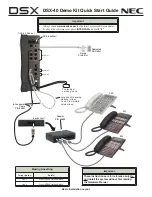
144
Glossary
Gigaset SX763 WLAN dsl / en AnnA / A31008-M707-R131-1-7619 / glossary.fm / 20.07.2006
Sc
hablone 2
005_0
7_2
7
Glossary
Access point
An access point, such as the Gigaset SX763 WLAN dsl, is the centre of a wireless local
network (
). It handles the connection of the wireless linked network components
and regulates the data traffic in the wireless network. The access point also serves as an
interface to other networks, for example an existing
LAN or via a modem to the
. The operating mode of wireless networks with an access point is called
Ad-hoc mode
Ad-hoc mode describes wireless local networks (
), in which the network compo-
nents set up a spontaneous network without an
, for example several Note-
books in a conference. All the network components are peers. They must have a wire-
less
ADSL /ADSL2+
Asymmetric Digital Subscriber Line (ADSL) and ADSL 2+ are special types of
data
transfer technology.
AES
Advanced Encryption Standard
AES is an encryption system, which was published as a standard in October 2000 by the
National Institute of Standards and Technology (NIST). It is used for
encryption. A
distinction is made between the three AES variants AES-128, AES-192 and AES-256 on
the basis of the key length.
Auto connect
Auto connect means that applications such as Web browser, Messenger and E-mail
automatically open an
connection when they are launched. This can lead to
high charges if you are not using
. This function can be deactivated on the
Gigaset SX763 WLAN dsl to save call charges.
Bridge
A bridge connects several network segments to form a joint network, for example to
make a
network. The segments can have different physical characteristics, for
example different connections such as
and wireless LANs. Linking individual
segments via bridges allows local networks of practically unlimited size.
See also:
Broadcast
A broadcast is a data packet not directed to a particular recipient but to all the network
components in the network. The Gigaset SX763 WLAN dsl does not pass on broadcast
packets; they always remain within the local network (
) it administers.
















































